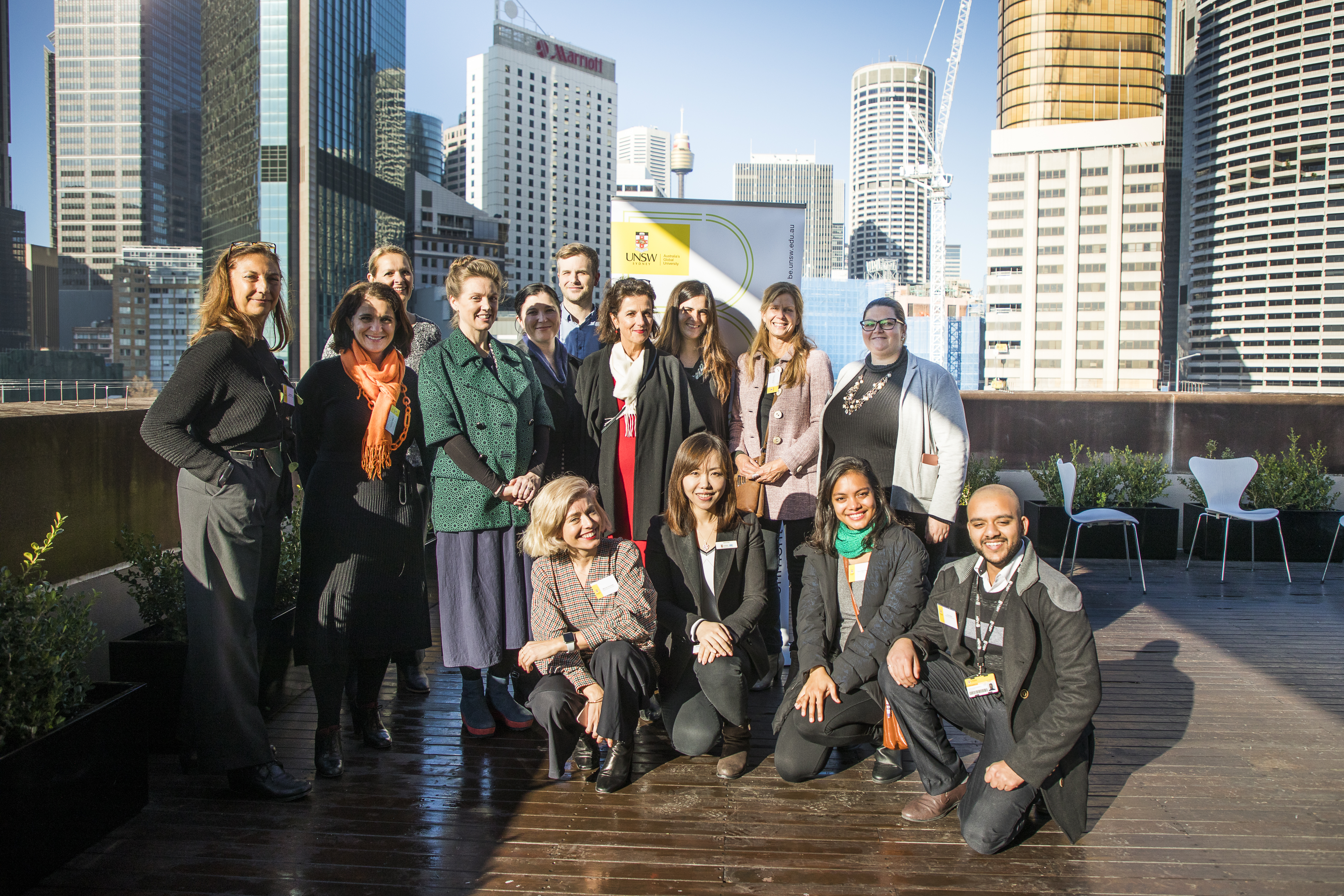BE Involved Event Launch Wrap-Up
The new BE Involved programs address the changing demands of the Built Environment profession.
The new BE Involved programs address the changing demands of the Built Environment profession.

Industry practitioners, UNSW alumni, and current Built Environment students were in attendance for the launch of the new BE Involved platform, a networking breakfast held at the Museum of Contemporary Art on 22 June.
The Dean of UNSW Built Environment Professor Helen Lochhead officially launched the new BE Involved programs aimed at addressing the changing nature of the Built Environment industry.
The 4 new programs announced have been designed specifically for the needs of practitioners at all stages of their careers. The Career Ready Mentoring Program and the Professional Placement Program are key professional development opportunities on offer for graduates entering the field, whilst New Single Courses and the Practice-Based PhD offer established practitioners the ability to further their practice through continuing education.
Speaking on the philosophy behind the new programs, Professor Lochhead said:
“We’re extremely excited to launch BE Involved, which will give our students the opportunity to develop the skills needed to succeed in an increasingly competitive workforce.”
Professor Lochhead also convened a short panel discussion with Built Environment alumni to discuss the importance of the new initiatives for both students and practitioners.
Panel member Mr Matthias Hollenstein (Master of Architecture, 2009), Co-Founder of design studio Stewart Hollenstein, said the Career Ready Mentoring Program in particular was valuable in establishing connections within the industry.
“It’s great to have that person you can reach out to and lean upon for advice, not only now, but throughout your career,” he said.
He said it was rewarding to assist current students in making the transition to the workforce.
“You find that you come full circle throughout your career by becoming a mentor and having that relationship with someone entering the industry, just as I had when I first entered,” he said.
Fellow Stewart-Hollenstein Co-Founder Ms Felicity Stewart (Bachelor of Architecture, 2009) reiterated the importance of mentorship, especially in the cut-throat design field.
“We’re still using mentors (today). Having people, you admire in our industry that you can just pick up the phone, ring, and ask for advice – it’s incredibly valuable,” she said.
UNSW Adjunct Professor Diane Jones (Bachelor of Architecture, 1977), Executive Director of PTW Architects, said that the Professional Placement program was also key for early career development, enabling students to apply their knowledge in a supervised setting.
“We’ve had structured placement in our company for some time and what we find is students who come and work with us really come full circle.
“They often come back again and work with us at some time or another and it can be a very fruitful long-term relationship,” she said.
Professor Jones also highlighted opportunities, such as the Built Environment Single Courses, for established practitioners to further refine their practice.
“The nexus between theory and practice is where our industry must move towards,” she said.
Current Practice-based PhD student, President of CETOP Education Health Infrastructure Ms Renate Carius agreed that the future of Built Environment will be shaped by theory and practice.
“There is a constant dialogue between the way we practice and some of those bigger questions.
“The Practice-based PhD is a wonderful opportunity to take the ideas that I’ve had for a while and place them in a global context through intellectual framework(s),” she said.
“I would see continuing education as absolutely vital to developing practitioners and shaping their careers and the field.”
At UNSW Built Environment we are always seeking partners to work with us to build an agile platform for education, research and exchange that responds to the changing needs of the professions.
We invite you to join us in our goal to develop career-ready graduates with conscience that positively engage, adapt and shape our future cities: https://www.be.unsw.edu.au/BE.involved